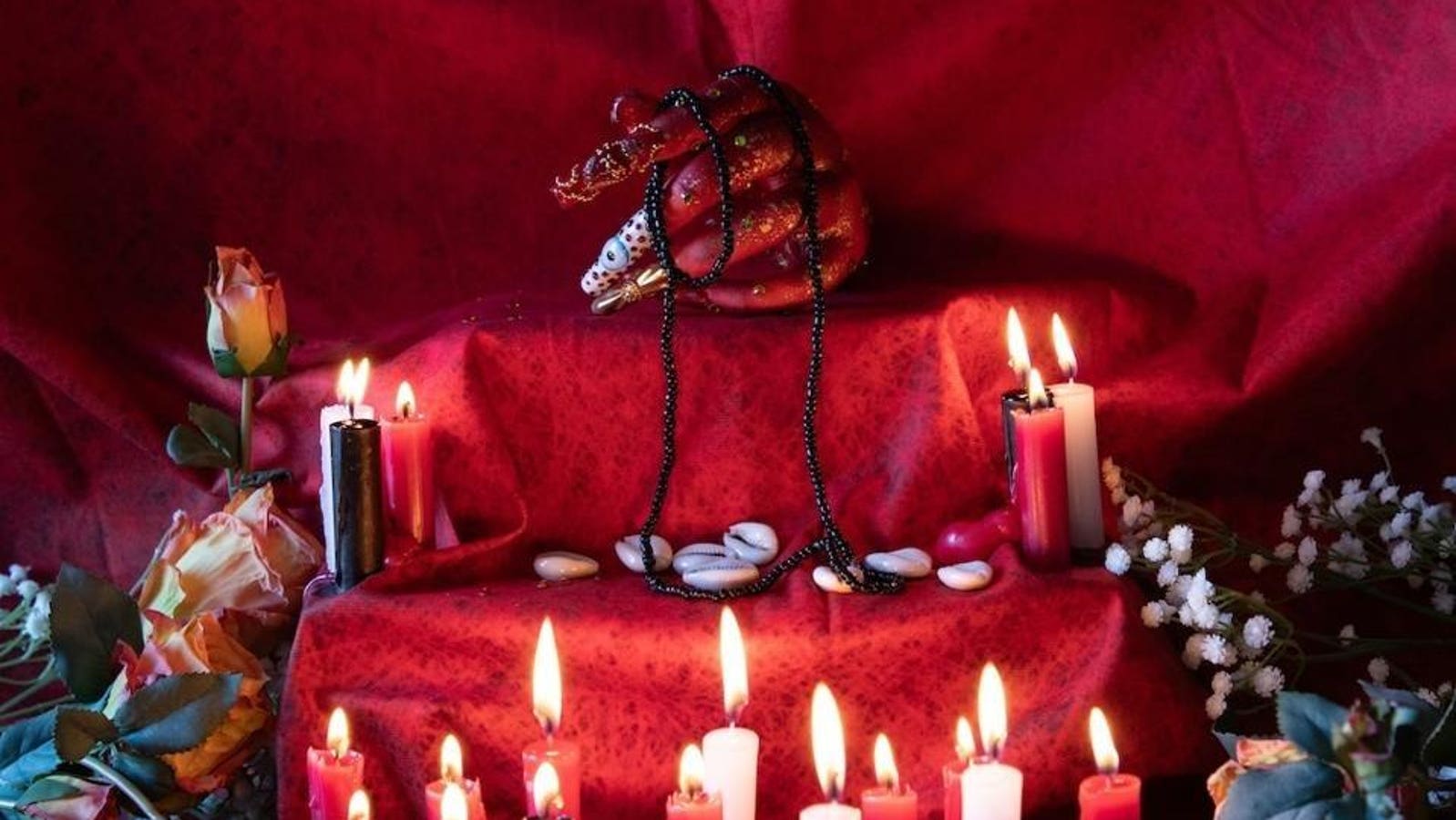Miguel Braceli in collaboration with New Rochelle High School students, Here Lies a Flag, collective … [+]
Interdisciplinary artist, architect, and educator Miguel Braceli collaborated with New Rochelle High School students to dig a hole in the ground to metaphorically bury a flag, acknowledging the cultural history of the land. The collective performance unearths and resurrects the past civilizations that maintained the land before the arrival of colonial settlers.
Here Lies a Flag (2021) amplifies the need to recognize settler colonialism as a system of oppression that aims to displace a population of a nation (often indigenous people) and replace it with a new settler population. The New York-based artist, born 1983 in Valencia, Venezuela, and trained as an architect, creates site-specific works that unite communities, schools, and organizations in the development of Proyectos Formativos (Formative Projects).
Braceli is among 53 emerging artists featured in the first of two parts of Bronx Calling: The Sixth AIM Biennial, curated by Director of Curatorial Programs Eileen Jeng Lynch, and on view at The Bronx Museum through March 31. Each artist was part of the museum’s annual Artist in the Marketplace (AIM) Fellowship program in 2020, 2021, 2022, or 2023. Part Two will be presented between April 12 and June 16.
We encounter a wide rage of talent, themes, and urgent topics including race, gender, class, sexual orientation, age, ethnicity, religion, and nationality as a means of contending with colonial histories and imagining speculative futures. Participating artists of African, Asian, Latin, Middle Eastern, Caribbean, European, and Australian descent from more than 20 countries, draw on their personal experiences and cultural identities to combat systems of power that seek to oppress, abuse, and oppose Others.
The Biennial for the 2020 and 2021 AIM fellows was postponed due to the pandemic, resulting in this year’s two-part showcase, making it the largest-yet representation in a single Biennial (26 artists in Part One and 27 in Part Two).
Yelaine Rodriguez, La Hija de Shango (Catch These Shango Hands), 2022
We’re ensconced in the haunting allure of Afro-Caribbean conceptual artist Yelaine Rodriguez‘s immersive altars, which examine the history of enslaved Africans who risked their lives fighting for freedom. Executed in 2022, La Hija de Shango (An ode to Flo-Jo) and La Hija de Shango (Catch These Shango Hands) Afro-syncretic religions as a pillar of Afro-diasporic resistance and cultural inheritance.
The daughter (hija in Spanish) of Shango (an Orisha [or spirit] in Yorùbá religion) marries the cultural identities of the AfroDominicanYork artistic scholar, educator, independent curator, cultural organizer, and writer, who merges her creative language and academic research in her artistic practice. Her visual art conceptualizes wearable art, sculptures, and site-specific installations drawing connections between her research on Black cultures in the Caribbean and the United States.
The third Alaafin of the Oyo Kingdom prior to his posthumous deification, Shango is a royal ancestor of the Yorùbá people, who inhabit a large part of Western Africa, including Nigeria.Their centuries-old religion incorporates indigenous beliefs, myths and legends, proverbs, and songs. Shango has numerous manifestations, including Airá, Agodo, Afonja, Lubé, and Obomin, and is known for his powerful double axe (Oṣè).
In traditional Yoruba beliefs, all people experience Ayanmo (destiny or fate), with an expectation that everyone will eventually achieve the state of Olodumare (becoming one with the divine creator who is the source of all energy). Life and death is a continuous cycle of existence in various bodies, in Ayé (the physical realm) as the spirit gradually progresses toward transcendence.
Walter Cruz, Peace be With You, 2023
Peace be With You (2023) by Walter Cruz packs a punch with the textural complexity of acrylic, pumice stone, kismet boxing glove, t-shirt rope net, and book cover, synthesizing the diverse materials into a resolute composition. The Bronx-based artist who strives to inspire Black and Latinx people, creates at the intersections of art and design to convey elegant dialogues.
An easy walk from the 4 and D trains, and the BX6 and M102 buses,The Bronx Museum is worth the visit from anywhere in the city in an effort to subvert colonialism. Moreover, The Bronx Museum is free to everyone, and all New York City art museums are free to residents of the five boroughs.







